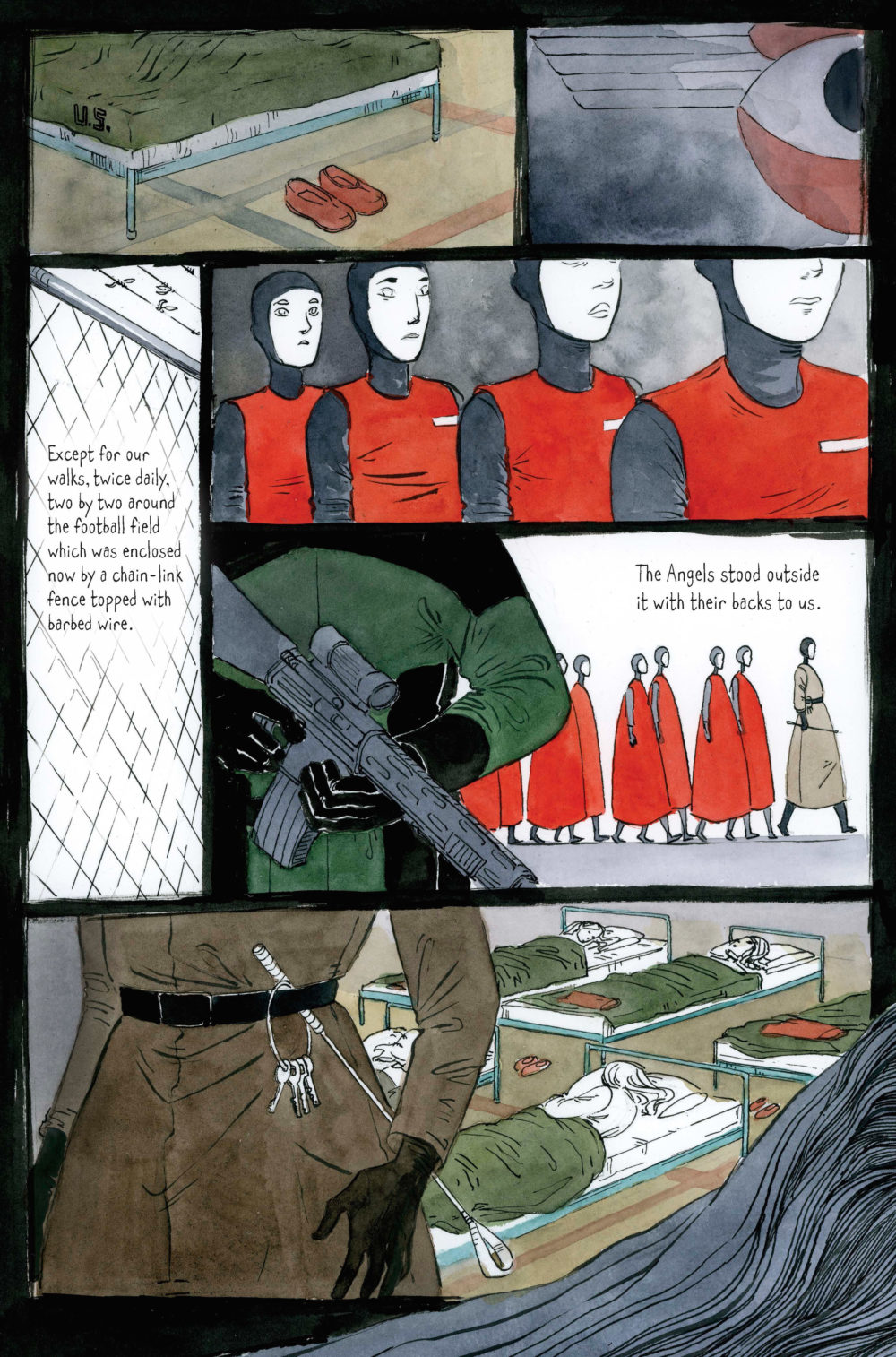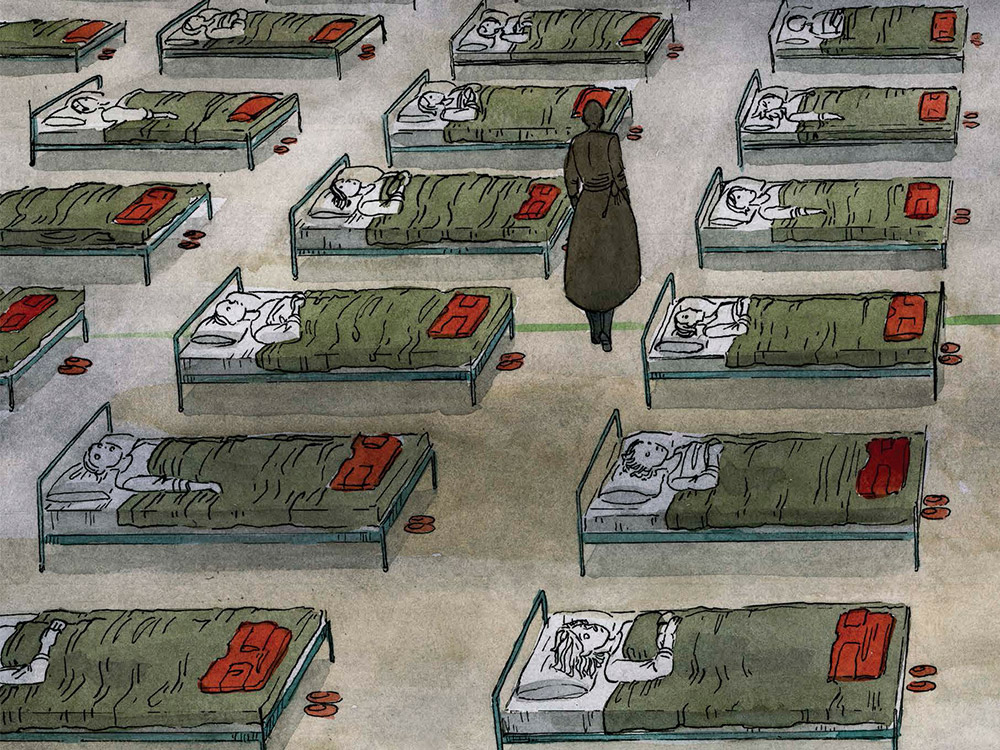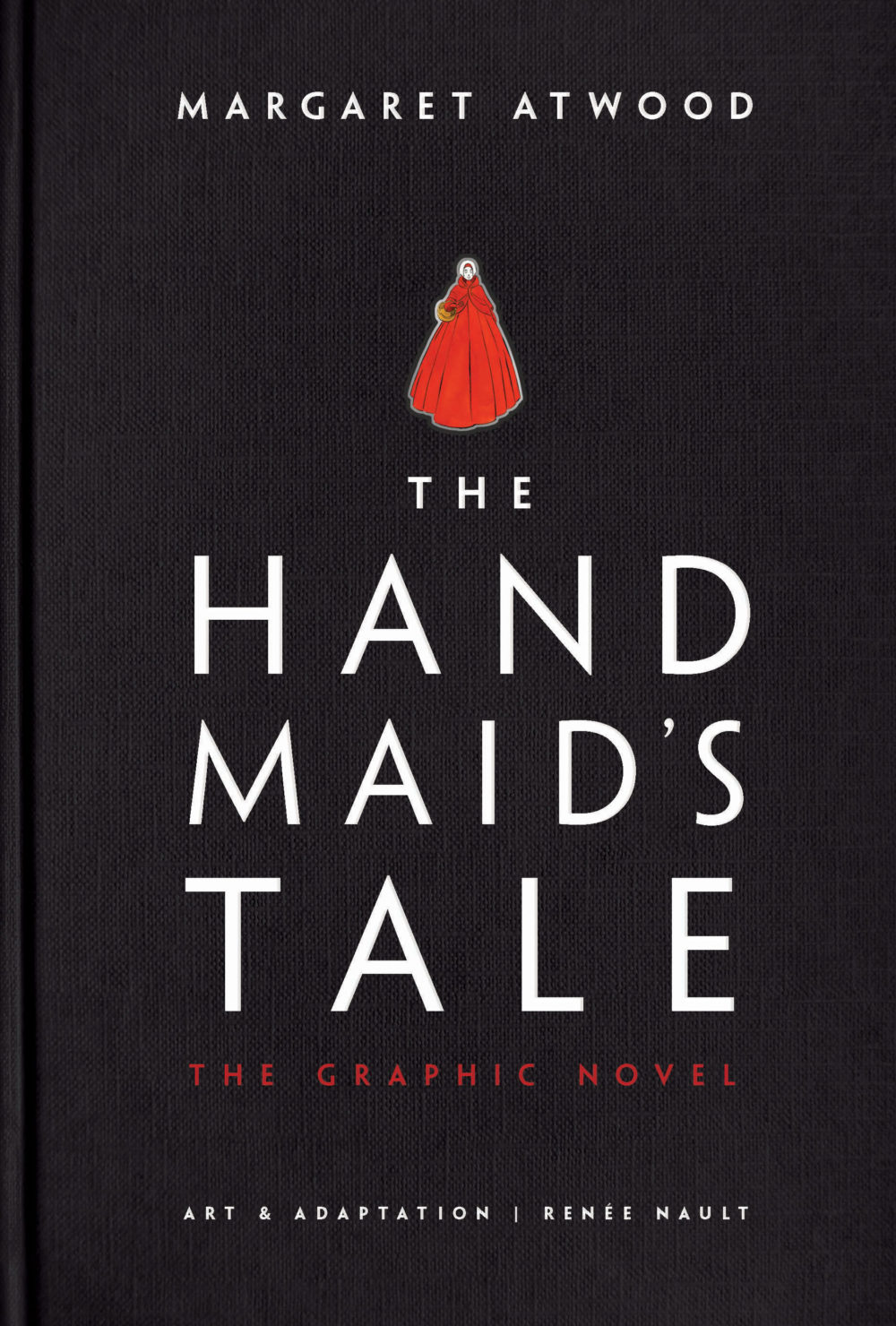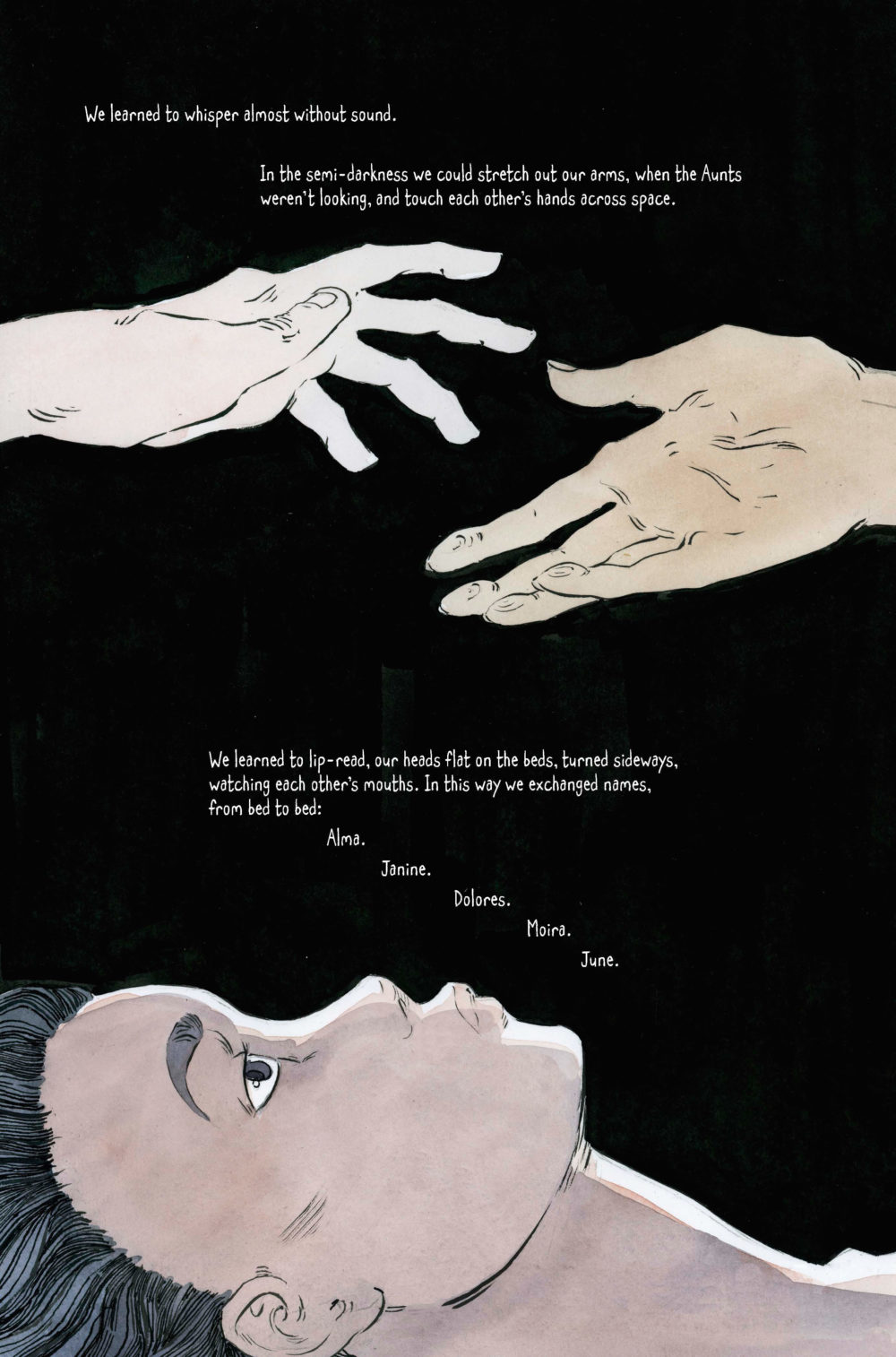Many readers, like myself, have read Margaret Atwood’s classic novel The Handmaid’s Tale both before and after the Hulu adaptation debuted. Regardless of when the iconic tale came into your life, fans agree Atwood’s prolific prose weaved a compelling and impactful novel.
Published 33 years ago, The Handmaid’s Tale brought to life Gilead, a dystopian version of America filled with repression. Back then, fans devoured the novel but had to imagine what Gilead looked like, how Offred appeared, and how the most brutal scenes would have occurred. Now, a new graphic novel published by Doubleday Books and Renée Nault brings the acclaimed story to life with a 280-page illustrated version of the now iconic story.
For those of you unfamiliar with the acclaimed novel (or the Hulu or film adaptations that followed it), allow my high school AP English Literature course knowledge to briefly catch you up to speed. The story follows Offred, a Handmaid in the new Republic of Gilead. Due to a fast-moving decline in birthrates, the newly formed government creates restrictive lifestyle rules in the dystopian U.S., and issues biblically inspired Handmaids — read as: fertile women — to serve in each ranking officer’s home with the sole purpose of conceiving a child. Offred tries to adjust to her new life as she goes about her new daily routines and longs for the time before Gilead, when she had a husband, a daughter, a job, and access to knowledge, books, and money.
The novel, while initially written as a satire in the ’80s, remains relevant today. As such a prolific tale with a powerful warning, any adaptation has so much to which to live up. Nault’s beautifully illustrated comic illustrations capture Atwood’s haunting story and bring Offred’s new reality to life that both fans of the original and new readers will be sure to enjoy the politically charged tale.
The graphic novel, created in collaboration with Atwood, follows the same storyline and plot points laid out in the original novel, even including Atwood’s original words on each page. The story starts off with an illustrated look at the Red Centre and training the first generation of Handmaids in the newly formed Gilead, and follows the novel’s chronology of events between Offred’s life as a Handmaid and flashbacks to her previous memories as a free, independent, and self-sufficient woman. Nault illustrates iconic scenes, such as the should-be-read-as-problematic Ceremony, a night out at the forbidden Jezebel’s, a Scrabble match with her Commander, interactions with a winking Nick, a Birth Day milestone, and even the future-based epilogue.
Obviously, with a 240-page book with full-color illustrations, it is not possible to fit the 300-plus pages of original text, so clearly certain scenes had to be omitted for the sake of brevity. With that being said, this adaptation incorporates all the big moments from the original, and even Offred’s clever use for butter packets. No need to fret, fans! Details from original novel in terms of characterization, locations, or important plot points from the original have been preserved and brought to life in this abridged adaptation.
Nault finds ways to balance each page between several small panels of different moments and reactions with full-page spreads to denote wider scenes and more important scenes. As Atwood’s novel clearly uses color to enhance the setting’s imagery and society’s classes (thanks again to my AP Lit lessons for that insight!), Nault carefully uses color to bring the storyline to life between the different timelines, emotions, and caste systems. Nault’s use of bright color adds a positive tone to denote June’s former memories with Luke, Moira, and her mother and daughter, while more somber, darker colors reflect the oppressive, dystopian world of Gilead.
The illustrated story concludes with Offred ambiguously entering the Eyes’ van, quickly followed by the “Historical Notes” epilogue in which the all-male speakers regale audiences with tales of this past historical period, much like in the original book’s ending.

For fans of the original feminist novel, this graphic novel makes the perfect companion story, illustrating the tale we’ve had to imagine in our heads since first discovering Offred’s new reality. As the graphic novel was just released, revisiting this story from a detailed, artistic perspective becomes a great precursor to Atwood’s sequel, The Testaments, due out this September, in which we find out what happened to Offred after she enters the van.
Photos: Doubleday Books



